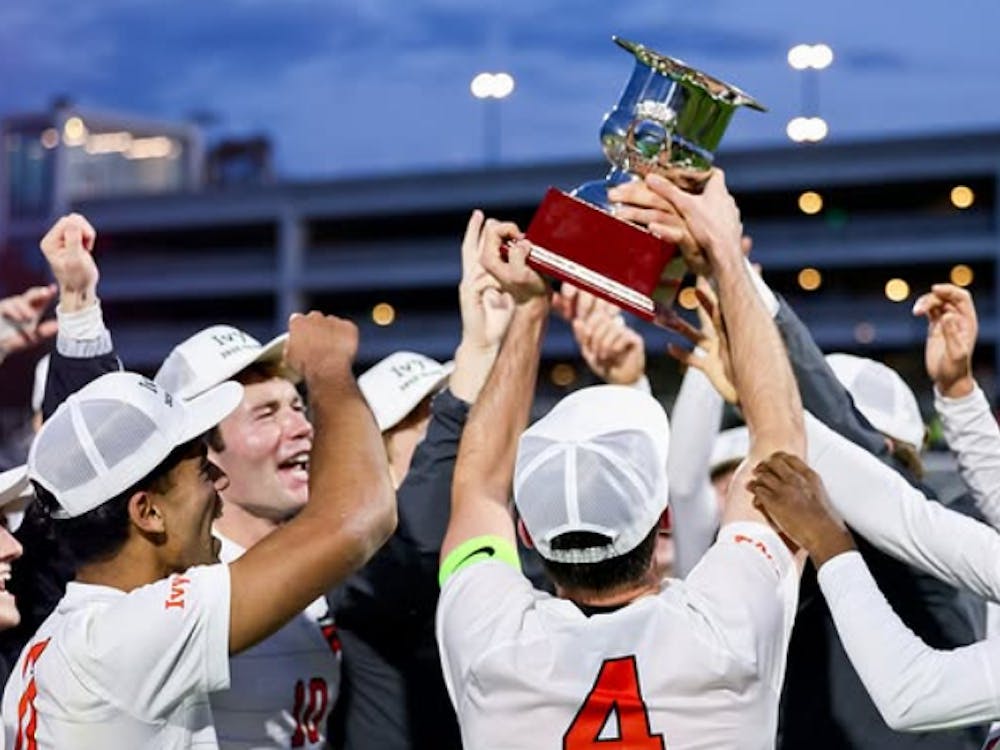Need proof that penalty killing is critical to a good hockey team?
Look no further than the standings in the men's Eastern College Athletic Conference Hockey League this season: the four teams atop the league standings all rank in the top five in penalty killing.
Princeton has successfully killed 74 of 85 power plays this season, or just over 87 percent — ranking the Tigers ninth nationally and second in the ECACHL.
The Tigers' penalty-kill unit is forced into action any time the team picks up a penalty, which gives their opponents a one-man advantage on the power play.
Penalty killers use two main tactics to overcome this disadvantage: positioning themselves in such a way as to limit the opposition's good shots and pressuring the other team to force the opposing players to turn the puck over.
Princeton's penalty-kill system employs two forwards and two defensemen on the ice at a time. Contrary to what one might think, the forwards play a key role in the aggressive nature of the system.
"It all starts with the other team's breakout," sophomore forward Landis Stankievech said. "Ideally, we'd like to keep them hemmed in their end so they can't even get close to our net ... If the forwards think they can get the puck, they will try to 'buzz' the other team in its own end, which basically means both of them go after the puck aggressively trying to keep them from breaking out."
If the other team finally sets up behind its own net, the Tigers go into what is called a "diamondback" setup. All four skaters make a diamond on the ice and try to force the opposition to the outside of the rink so that they must dump the puck into the Princeton zone.
"If they do get the puck into our zone, we will try to keep the puck to the outside near the boards and not allow shots from the middle," Stankievech said. "We do this by forcing them 'inside out' and keeping sticks in the passing lanes, and if someone does try to shoot, then you want to make sure your body is in the shooting lane to block the shot."
This aspect of the Tigers' penalty kill, the willingness of defenders to hurl their bodies in front of the puck, has been one of the main reasons why the Princeton power-play kill has been so successful this season.
"We are all committed to blocking shots," junior forward Darroll Powe said. "Every guy on the team is willing to sacrifice his body in order to keep pucks from getting to the net."
The Tigers' power-play strategy is not unique in terms of the system. What is unique, however, is the extremely aggressive play of all four penalty killers on the ice — as evidenced by a play called the "three plus one".

"Whenever we see an opportunity to pressure an opposing player and create a turnover, we jump," senior captain Patrick Neundorfer said. "When we have one [penalty] killer jump to pressure, two other killers must also jump to help him out, ensuring that we get the puck out of the zone. The fourth killer stays in front of the net in case the other three killers somehow do not come up with the puck."
But what about the last line of defense in the rink — the goaltender?
In addition to his obvious responsibility of stopping shots on goal, the goalie must control dump-ins so the penalty killers can ice the puck. If dump-ins are not controlled, the team on the power play can regain control of the puck and generate a scoring opportunity.
Ultimately, it all comes down to the last line of defense: Tiger players agree that the number one reason for Princeton's penalty-kill success this season has been the play of its goaltenders.
"You need solid goaltending to have a successful penalty kill," Powe said, "and our goalies have done a phenomenal job this season closing the door when we've needed them to."







